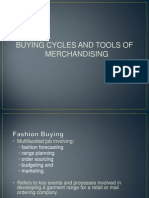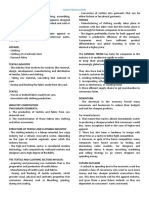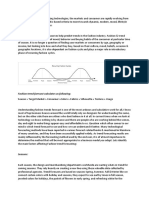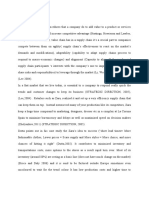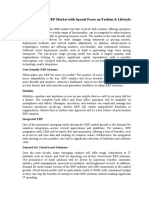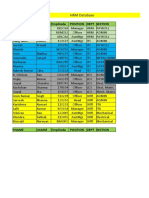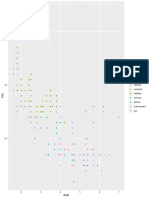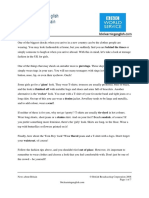0% found this document useful (0 votes)
133 views6 pagesDocument 1
The document discusses the process of reviewing past season sales figures to plan for upcoming seasons. Key points include:
- Merchandise departments compile sales reviews to identify bestselling and poor-selling styles.
- Buyers analyze sales figures in sales review meetings to understand what customers like and build upon successes.
- Low sales may be due to quality issues, so quality control provides input.
- Bestsellers will likely be reordered, while poor sellers are avoided unless trends have changed.
- Budgets are based on past performance and anticipated trends. Reviews help estimate new range plans before design begins.
Uploaded by
Neelakshi srivastavaCopyright
© © All Rights Reserved
We take content rights seriously. If you suspect this is your content, claim it here.
Available Formats
Download as DOCX, PDF, TXT or read online on Scribd
0% found this document useful (0 votes)
133 views6 pagesDocument 1
The document discusses the process of reviewing past season sales figures to plan for upcoming seasons. Key points include:
- Merchandise departments compile sales reviews to identify bestselling and poor-selling styles.
- Buyers analyze sales figures in sales review meetings to understand what customers like and build upon successes.
- Low sales may be due to quality issues, so quality control provides input.
- Bestsellers will likely be reordered, while poor sellers are avoided unless trends have changed.
- Budgets are based on past performance and anticipated trends. Reviews help estimate new range plans before design begins.
Uploaded by
Neelakshi srivastavaCopyright
© © All Rights Reserved
We take content rights seriously. If you suspect this is your content, claim it here.
Available Formats
Download as DOCX, PDF, TXT or read online on Scribd
/ 6





